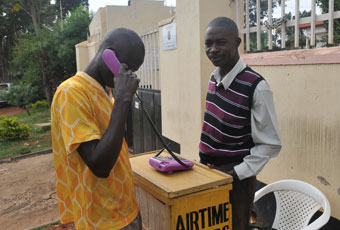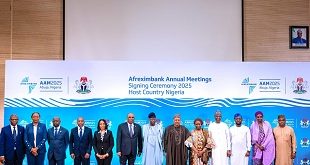
By Eriasa S. Mukiibi
Kenya has made drastic cuts in mobile telephone call tariffs, posing a huge challenge to her Great Lakes regional counterparts on how to cope with the competitiveness in the sector following the launch of the East African Common Market.
Kenyans have been calling at an equivalent of UShs300 on average per minute across all networks, with Uganda charging Ushs 340. But the price difference has changed dramatically following the latest decision by Kenya’s telecom regulator, the Communications Commission of Kenya (CCK), to halve the interconnection tariffs”” the rate telecom firms charge one another for cross-network calls.
Kenyans now call for an equivalent of about Ushs75 per minute across all networks.In Rwanda, the uniform call rate is Rwf90 (about Ushs 270) per minute, while it is Tshs 5 (about Ushs 7.5) per second in Tanzania.This is still lower than Ushs9 per second charged by MTN per second in Uganda.
Uganda’s telecom regulator, Uganda Communications Commission’s (UCC) attempts to fix uniform interconnection tariffs at UShs131 last year immediately attracted litigation between UCC and telecom market leader MTN Uganda. MTN sued UCC insisting that the Ushs131 per minute was way below the realistic interconnection rate. According to MTN, the realistic tariff should not go below Shs151.
The UCC’s plan to enforce the uniform interconnection rate ceilings, which were slated to come into force on January 1, 2010, had been halted by court upon application by MTN Uganda.
The case was later withdrawn to allow further consultations between UCC and the stakeholders in the telecom sector.
Last week, UCC issued a statement indicating that the new interconnection rate is already operational.
“Following the conclusion of the consultations, the Commission hereby notifies the public that the above interconnection rates shall be applied as default/reference interconnection rates and will take effect from July 6, 2010,” the UCC statement reads in part.It’s not clear whether MTN consented to the tariff which they had initially opposed. Attempts to contact MTN did not yield much as officials were cagey about the issue.

However, even at the Shs131 interconnection rate per minute, telephone calls on Uganda’s telecom network would still be much higher than in Kenya.
Following the halving of the interconnection tariff in Kenya to Kshs 2.1 (about Ushs50), Zain Kenya also slashed its call rates by 50%, offering its customers a competitive rate of Kshs 3 (about Ushs75) per minute to call across all networks.
Safaricom, which controls about 80% of Kenya’s telecom market, also swiftly responded by bringing its call rates down from Kshs 12 (Ushs 300) across all networks to Kshs 3 (Ushs 75), with intra-calls on the same network costing less at Kshs2 (Ushs50) per minute, contrary to the Kshs8 (Ushs 200) previously.
The CCK’s target was to open up the market to competition and break up the ‘club effect’ established by Safaricom. Since most of the mobile telephone customers are on the Safaricom network, the telecom giant has been offering preferential rates to call within its network and higher rates for calling other networks. The target was to discourage calls to other networks and attract more customers from the competitors, whose servicesthen would look expensive.
MTN Uganda is operating a similar model. Because it controls about 60 per cent of the market share, its customers cannot easily switch to other networks. If they did that, they would pay higher charges per call since most of the people they would be calling are on MTN network.
Therefore the uniform interconnection rate would encourage subscribers of other networks not to crossover to MTN since the charges would be uniform.
As the interconnection fees stayed high, the telecom companies started promotional campaigns to enable their respective customers call within their networks at huge discount rates, but still charged higher rates for calls across other competitors’ networks.
For Ushs500, for example, Zain customers in Uganda get 25 minutes calling time over 24 hours within the same network under the Kika promotion. If they pay Ushs2000 to enter the Unlimited promotion, they get 83 minutes of call time between 6am and 6pm within the same network.
Warid and Uganda Telecom also have introduced similar arrangements for calling within their networks. For Orange Telecom, customers can load airtime, make calls within the same network for a specific period without any charge. Calls on other networks would be charged at Ushs340. But upon expiry of the period, the calls under Orange network are charged Ushs320 per minute unless the customer recharges his/her credit balance.
In one of MTN’s packages, MTN Zone, customers call on a percentage discount even across other networks, but the subsidy is always higher for calling on MTN network.
This has prompted Ugandans to acquire multiple mobile phone sets or Sim cards to benefit from low call rates or sim cards. Nakitende Shameem graduated from Makerere University recently. She carries three mobile phones in her handbag, each connected to a different network. “This is the best way to keep call bills low,” she says. She only loads airtime on the line she intends to use at a particular time.
Namakula Hadijah, her elder sister, thinks holding multiple handsets is wasteful. On her part, she has acquired Sim cards for all networks. But she has only one mobile handset. “My friends just need to beep me and I switch to their preferred line,” she explains with a beam.
Kibuuka Godfrey, the communications director at the Ministry of Information Communication Technology, says that the promotions that have resulted from stiff competition among the telecom companies have significantly so reduced call rates that high tariffs are no longer an issue.
“Do you have a Warid line? If you can call for a full day using Shs1500, how can you say call rates are high?”
However, the promotions apply only to subscribers of the respective networks and they are temporary anyway. The flat mobile telephone call rate in Uganda is shs 340.
To be competitive following the low call rates in the regional telecom sector occasioned by recent changes in Kenya, Uganda will need to review the interconnection rates further downwards. The Shs131 is still much higher than Kenya’s Kshs 2.1 (slightly over Ushs50).
Further, even as the UCC claims that the uniform interconnection rates took effect on July 6, there is nothing yet to show for it in terms of tariff reductions.
Telecom companies remained cagey on whether they have started implementing the new interconnection tariff. Fred Masadde, the Zain spokesperson, declined to comment. Mark Kaheru, the marketing communications officer at Uganda Telecom, only referred The Independent to the company’s legal department.
The UCC Senior Communications Officer, Fred Otunnu, too declined to comment, saying he was on leave. Questions sent to the UCC on why the interconnection rates in Uganda have been set much higher than in Kenya remained unanswered despite assurances from Isaac Kalembe, the UCC media and public relations officer, that he would forward them to the ‘right’ officers.
Many of the new changes in the Kenya’s telecoms sector are attributed to the entry of India-based telecom giant Bharti Airtel, which acquired Zain Africa operations last April. On his first visit to Kampala, Bharti Airtel’s international CEO Manoj Kohli, sounded an early warning.
He said Zain Uganda, which will soon rebrand to Bharti Airtel, has earmarked US $100 million to expand its network and improve its technology.
It was a clear statement of intent, especially targeting MTN Uganda’s dominance of the market. Bharti Airtel is famous for targeting low-income earners by offering competitive call rates.
Zain Uganda is therefore expected to announce lower call rates as a warning shot in a tariff battle that will be protracted and exhausting. But most likely they would still be higher than Kenya’s because of the disparity in the interconnection tariffs between the two countries.
Besides the interconnection fee of Shs131 for mobile telephone calls, government charges a 30 per cent tax on mobile telephone calls (12% excise duty and 18% VAT). The excise duty on airtime in Rwanda was recently increased from 5 per cent to 8 per cent.
In an affidavit sworn in support of MTN’s suit in court to halt the implementation of the interconnection rates which UCC had set, Tom Mbalinda Nuwagaba, a senior manager of commercial law and litigation, had argued that upholding the tariffs was against public policy and would hurt taxable revenue. He did not elaborate. But basic economics shows that lower rates would boost productivity and widen the tax base.
 The Independent Uganda: You get the Truth we Pay the Price
The Independent Uganda: You get the Truth we Pay the Price


